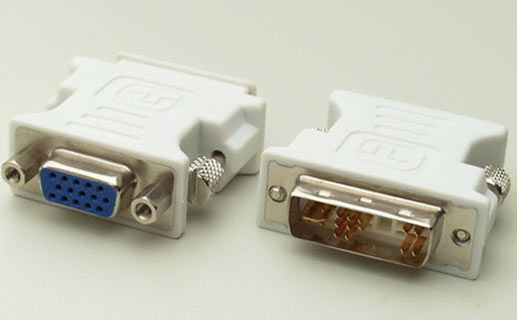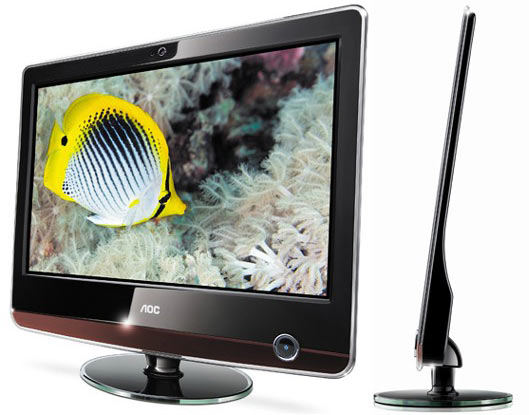Experience choosing to buy LCD monitor
How to choose an LCD monitor for business needs, play games or watch entertaining movies, both suitable for money and high economic efficiency?
1. Interested in specifications
The most interesting thing when buying an LCD monitor is the display color of the screen. The more clear and natural colors, the better the image quality is shown. To try out colors, you can turn on fruit images, from which to see if the colors are natural and harmonious in the colors. Or you can switch to natural and human images to see if the shades of gray, white and black display are sharp.
 Experience choosing to buy LCD monitor Picture 1
Experience choosing to buy LCD monitor Picture 1
Color is a decisive factor in choosing an LCD monitor
In the test of displaying text, you adjust the text in small sizes from 7 to 8 pixels and see if the tools on the Toolbar bar are clear or blurry. Then you convert the text in white text on black and black text on a white background to be able to accurately evaluate the display colors and sharpness of the text.
In addition to the display colors, you also need to rely on the specifications to evaluate the quality of an LCD monitor. Specifications include frame, resolution, brightness, pixel size, contrast, response time, viewing angle and input of the LCD monitor.
Frame is the display size of the screen. The LCD screen has many frames for you to choose from depending on the needs of individuals from 15 'or more. Screen resolution is also an important factor to assess the visibility of images. The higher the screen resolution, the sharper the image displayed.
However, if at high resolution the display image will get smaller, which will make your eyes work harder. Therefore, you should choose high resolution screens, then adjust the operating system to the resolution you like, because if you choose a low-resolution screen, you can't. tweak at a higher resolution in the operating system.
Next is the brightness of the screen. Brightness or Brightness, the higher the Brightness value, the better the brightness. Unit of brightness is cd / m2. 1 cd / m2 is calculated almost equal to the brightness of a candle. In contrast, the main pixel size of the screen is Dot Pitch or also known as Pixel Pitch. The pixel size determines the resolution of the screen, the smaller this size, the clearer and sharper the image will be displayed. Normally an LCD monitor has Dot Pitch of about 0.285mm which will give a clear picture.
Another parameter of the LCD monitor is the contrast. Contrast shows the brightness of each pixel. At 1000: 1 or 3000: 1 contrast is the pixel value 1000 times brighter or 3000 times itself when at the darkest brightness, so you need to choose a high-contrast contrast. However, it also depends on the light of the environment, a feature that you can easily see when left out of sunlight, you will almost never see the image displayed.
Time to display, also known as response time is equally important. The lower the level of time, the faster the image is converted, whereas if the time is too high you will be able to observe the change of pixels, and this makes you feel uncomfortable as there is' shadow ghost 'when pixels change slowly. However, with modern technology, all vendors advertise their devices with a response time of 2ms, 5ms to 8ms, which helps images be converted quickly and efficiently.
Next, you also need to look at the view of the screen, which is the ability to display images at different angles. Most LCD monitors have a view angle of 160/160 degrees horizontally and vertically, but if at other angles the image is little changed or almost does not change, it is acceptable.
 Experience choosing to buy LCD monitor Picture 2
Experience choosing to buy LCD monitor Picture 2
Convert from DVI port (white) to D-SUB port (blue)
The last parameter you need to consider is the screen input. Most LCD monitors have D-SUB and DVI ports. DIV is the abbreviated term for Digital Video Interface. DVI is a digital transmission port (digital) directly from the computer to the LCD monitor without having to switch to an Analog signal like the D-SUB port (VGA). The DVI port for smoother display of images, the signal transmitted from the computer to the screen is faster than the D-SUB port. However, if your computer's graphics card does not meet DVI standards, you can also convert DVI to D-SUB port via DVI to VGA adapter. In addition, high-end LCD monitors also include HDMI ports for you to watch movies in HD and Full HD.
2. Select LCD LED or regular LCD?
LCD LED display is also a common LCD screen, but is replaced with the light source, which helps the image display sharper and more energy-efficient. LCD monitors often use fluorescent light sources, whereas LED LCDs use light-emitting diodes and are about 30% more efficient.
In addition, light-emitting diodes have a smaller area, which helps them consume less electricity, meaning that using LED LCD screens will help us save more energy than with regular LCD screens. However, the price of LED LCD screens on the market is still quite high, so consumers need to consider how to choose the screen that is affordable for them and still be effective. use.
3. Select mirror screen, should it?
LCD screens are equipped with mirrors to shield the surface of the screen, but it also makes it easy to clean and clean without damaging the durability or the display color. Mirror screens can be manufactured from different types of glass, or higher-grade than made from Sapphire. The mirror screen made of Sapphire can withstand high pressure with a hardness of up to 9H, a solid level that, according to physicists, is just behind the solidity of diamonds. Such selection of LCD monitors with mirrors is also an equally important factor.
 Experience choosing to buy LCD monitor Picture 3
Experience choosing to buy LCD monitor Picture 3
The purpose of use will determine the type of monitor you need to buy.
4. What is the purpose of use?
- If you use the LCD monitor for entertainment, studying and watching movies, you should select the LCD monitor in Wide mode. Because in this mode, your view can be expanded within the working window, which helps you to see the text and images comprehensively.
With a horizontal screen, you can enjoy standard Full HD movies for HDMI, but the images are displayed sharp and detailed to every particle. In addition, you can also choose LCD monitors with external speakers for more dynamic sound, as well as select screens that support watching TV to watch broadcast channels.
- If you are a gamer, then your choice must be a square LCD. Since the screen is in Wide mode, it is difficult to display in the resolution mode of most games at 1024 x 768. When selected in this mode, the Wide LCD screens will shrink and lose. part in the right corner of the screen. In contrast to the square LCD monitor, it is easy to choose the optimal resolution at 1024 x 768 or 2048 x 1024 for playing games without losing the display image.
You should read it
- Instructions to adjust the screen brightness of Android phones
- How to turn an old laptop screen into a magic mirror
- Top 5 best screen brightness control apps on Android
- Adjust screen brightness of Windows 7 on PC, laptop
- What is Nit screen brightness?
- What is Nit when it comes to screen brightness?
- Manual manual and automatic computer screen brightness adjustment
- Fix the error of not adjusting screen brightness on Windows 10
- PicPick, a multi-screen screen capture tool, supports pixel measurement, color dots, color coding ...
- Tutorial 4 ways to adjust the screen brightness of Windows 10
- How to adjust the screen brightness of Windows 10 on the desktop
- How to bring Night Shift feature to Mac with F.lux






 Experience choosing to buy the best computer monitor
Experience choosing to buy the best computer monitor Tips for choosing the right monitor for Photoshop users
Tips for choosing the right monitor for Photoshop users Guide to choosing the best computer monitor
Guide to choosing the best computer monitor Experience buying old computer monitors
Experience buying old computer monitors Useful tips when choosing to buy LCD TVs
Useful tips when choosing to buy LCD TVs Hunting for Used Gaming Monitors and What You Should Know
Hunting for Used Gaming Monitors and What You Should Know